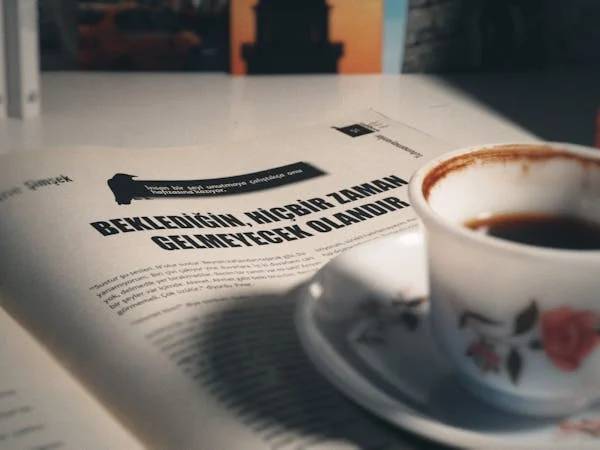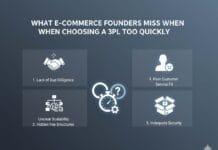We’ve all heard the pitch: “Everything’s digital now.” Email signatures have replaced business cards. Slide decks have replaced brochures. And yet… step into the office of any seasoned entrepreneur or sit down at a conference table with a veteran CEO, and what do you see? A well-designed folder. A thick, embossed business card. A leave-behind booklet that feels too nice to toss.
There’s a reason for that. Tangible brand collateral still speaks volumes—especially for leaders who understand that presence, consistency, and quality can’t always be compressed into a PDF.

Why Print Still Matters—Even to Digital Natives
You don’t have to be “old school” to appreciate the power of physical branding. Today’s sharpest business minds use print materials not as a fallback but as a forward-thinking strategy. When you hand someone a card with a velvety finish or a thick-gauge invitation that feels substantial, you’re saying: “I take my brand seriously. And I take you seriously too.”
Of course, having the right print partner matters. Services like Kwik Kopy make it easier for professionals to execute consistently across every piece—whether that’s signage for a pop-up event or a branded notepad for the boardroom. The focus isn’t just on getting something printed; it’s on getting it printed right.
The Business Card Is Not Dead
Let’s start with the smallest powerhouse in your toolkit: the humble business card. Yes, we’ve all exchanged QR codes and LinkedIn profiles at events. But ask anyone who’s built a serious network, and they’ll tell you: there’s no substitute for the impact of a beautifully crafted card.
It does more than hand over contact info—it becomes a reflection of your values:
- A minimalist layout implies clarity.
- A bold design suggests confidence.
- Quality stock and finish indicate attention to detail.
And the kicker? People keep them. In drawers. In wallets. In top desk trays. That staying power alone makes the investment worth it.
Brochures That Tell Your Story—Without a Wi-Fi Connection
We’re not just visual learners—we’re tactile ones, too. A printed brochure or catalogue offers something a website can’t: the physical act of flipping through pages, pausing on a detail, or showing a colleague across the table.
Whether you’re pitching services or showcasing past work, brochures can:
- Be mailed directly into the hands of decision-makers.
- Serve as leave-behinds after high-stakes meetings.
- Support sales reps who need fast, offline credibility.
And with strong design and premium printing, these pieces feel less like marketing and more like media—something that holds weight and commands time.
Signage That Owns the Room
Pop-up events, speaking gigs, training workshops—leaders often find themselves front and center. And when they do, physical signage becomes part of the brand.
Quality signage communicates that you’re intentional. It tells attendees: “This isn’t a side hustle. This is a serious operation.” Temporary signs made to look permanent. Pull-up banners that feel elevated. Posters that echo your brand palette. When executed well, these elements create consistency, boost visibility, and reinforce your authority as a leader worth following.
The Psychology of Tangibility
Let’s shift gears for a moment. Why does physical print hit differently?
Because psychology tells us that people attribute more value to items they can touch. A glossy portfolio feels more important than a link in your inbox. A branded folder handed out at a workshop makes the information feel more official than an emailed PDF ever could.
Tangible materials activate different parts of the brain—associating your brand with trust, permanence, and professionalism. Leaders who understand perception leverage this at every opportunity.
Print Builds Trust in a Distrustful Age
Here’s a reality check: digital marketing is everywhere, and most of it is forgettable. Pop-ups. Cookie banners. Sponsored content. It’s easy to tune out.
Print breaks through the noise.
Think about a client receiving a branded welcome packet. Or a new hire getting an onboarding folder with your company’s values printed inside. These moments feel curated. And that feeling—trust, thoughtfulness, reliability—is what today’s best leaders strive to deliver.
When Speed and Quality Matter
If you’ve ever prepped for a last-minute trade show or thrown together a pitch meeting in 48 hours, you know the stakes. You can’t afford flimsy prints or missed deadlines. You need a print partner that gets it—one that understands business urgency and still delivers top-tier work.
That’s where services like Kwik Kopy shine. They cater to professionals who demand both speed and polish. Whether you’re producing 20 handouts or 2000, you need to know the result will be consistent, sharp, and on-brand—every time.
Consistency Is the Real Flex
Here’s something most people underestimate: consistency is a flex.
When your logo color is exactly the same across every flyer, folder, and event banner, it shows discipline. It signals that your company doesn’t cut corners. And it reassures clients and partners that you bring the same level of care to your work as you do your brand.
Leaders who invest in high-quality print materials aren’t just being picky. They’re setting the tone for their organization. They’re saying: “This is how we do things. And we don’t settle.”
The Environmental Angle (Yes, It Matters)
A fair question: Is print still responsible in a sustainability-conscious market?
Short answer: It can be. Print providers that offer recycled stocks, low-VOC inks, and carbon-neutral options allow leaders to walk the walk—delivering materials that are both impactful and ethical.
For example, a sustainable print run of workshop manuals or client reports can demonstrate your commitment to the environment while maintaining professional standards. This isn’t a compromise—it’s a value alignment.
Use Cases That Still Convert in 2025
Let’s look at a few real-world examples where print still wins:
- Corporate training sessions: Branded binders, certificates, and signage establish authority and elevate the learning experience.
- Client onboarding kits: From welcome cards to printed service guides, these leave a stronger impression than an email drip sequence ever could.
- Thought leader mailers: Sending your personal guidebook, printed blog series, or workshop workbook? It feels high-value—and often leads to deeper engagement than digital content.
Even small touches like thank-you cards or branded envelopes can shift perception from “contractor” to “partner.”
The Print-First Leaders You Know (and Admire)
Think about top-tier business coaches, global consultants, or founders whose brands have stood the test of time. What do they have in common? A well-designed print suite.
It’s not an accident. It’s part of the formula: show up consistently, look sharp, and leave behind something that lasts longer than a handshake.
From the stationery on their desks to the folders they hand out at events, leaders worth remembering understand that the medium is part of the message.

Final Thought: Print Is the Silent Partner in Your Personal Brand
Not every leader has time to think about GSM paper weight or satin vs matte finish. But the best ones know when to delegate that thinking to someone who does.
And that’s the real takeaway here: investing in high-quality print collateral isn’t about going “old school.” It’s about controlling your narrative. Building credibility. Owning your visual identity—in the office, at events, or through the mail.
Digital might dominate the headlines, but tangible wins hearts.





